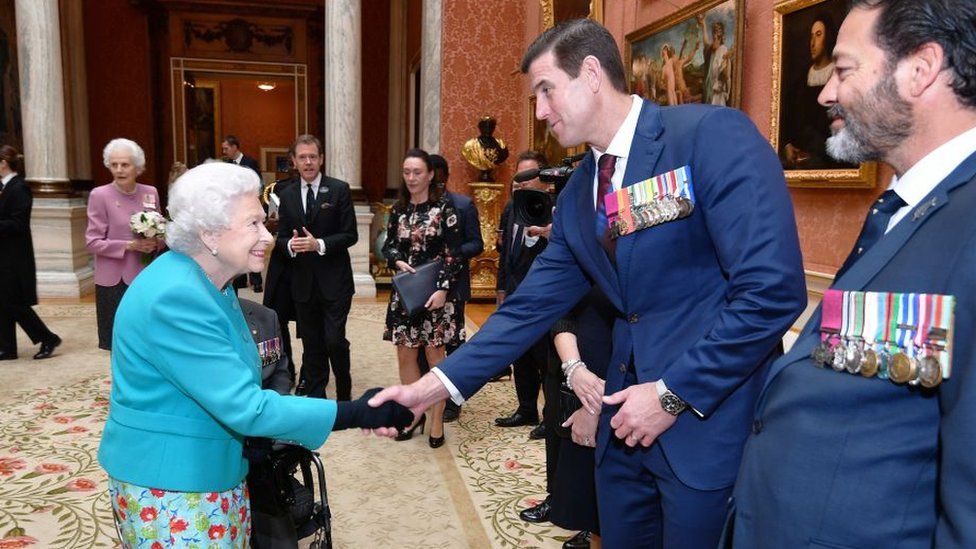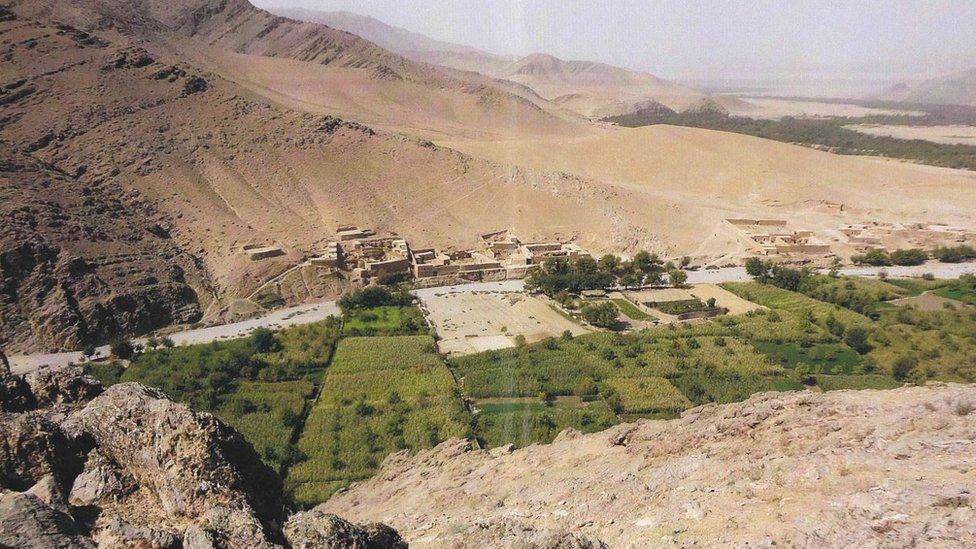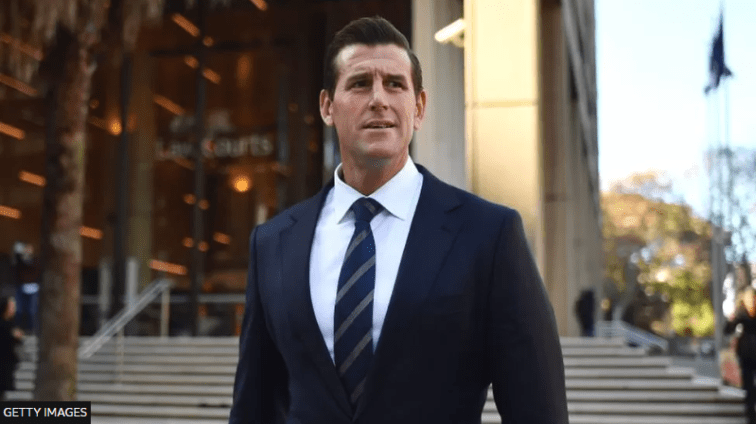For months on end, Australia's most-decorated living soldier sat stoically in a Sydney courtroom as dozens of witnesses accused him of war crimes, bullying peers, and assaulting his mistress.
But Ben Roberts-Smith was not the one on trial.
The 44-year-old had brought the case, suing three Australian newspapers over a series of articles in 2018 which he says defamed him. He argues they ruined his life by painting him as a callous man who had broken the moral and legal rules of war, disgracing his country in the process.
But the media outlets say they reported the truth, and have set out to prove it.
It is the first time in history any court has been tasked with assessing allegations of war crimes by Australian forces.
Warning: This article contains descriptions of violence which readers may find upsetting.
Lasting 110 days and costing up to an estimated A$25m ($16.3m, £13.2m), the trial has heard extraordinary and at times bizarre evidence about every facet of Mr Roberts-Smith's life.
It sparked a media frenzy, captured national attention, and has made Mr Roberts-Smith the public face of accusations of Australian war crimes in Afghanistan.
After sifting through volumes of evidence, this week a judge is due to hand down a decision in the historic case.
Hero or criminal?
When Mr Roberts-Smith finished his final tour of Afghanistan in 2012, he returned home a hero.
He received Australia's highest military award - the Victoria Cross - for having single-handedly overpowered Taliban machine-gunners who had been attacking his Special Air Service (SAS) platoon.
More accolades and admiration followed. He was crowned Father of the Year in 2013, appointed to high-profile executive positions, given prestigious speaking engagements and featured in massive portraits in the Australian War Memorial.
But Mr Roberts-Smith's shiny public image was shattered in 2018 when journalists Nick McKenzie, Chris Masters and David Wroe started publishing articles about his alleged misconduct in The Sydney Morning Herald, The Age and The Canberra Times.

The newspapers claim Mr Roberts-Smith was involved in six murders of unarmed prisoners or civilians while deployed in Afghanistan between 2009 and 2012 - which he strenuously denies.
According to the newspapers, these included a handcuffed farmer the soldier had kicked off a 10m cliff - a fall which knocked out the man's teeth, before he was subsequently shot dead.
Another was a captured Afghan teenager so terrified a witness recounted him "shaking like a leaf". He told the court Mr Roberts-Smith later claimed to have shot him in the head, boasting it was "the most beautiful thing I've ever seen".
The Federal Court also heard that Mr Roberts-Smith had used a machine gun to kill a captured fighter whose prosthetic leg was then taken as a trophy, and later used by troops as a drinking vessel. Other murders were ordered by him to initiate or "blood" rookies, the papers claim.
The Geneva Convention - international rules intended to limit the savagery of war - prohibits the torture, killing or cruel treatment of prisoners, while also offering protections to wounded and sick soldiers.
"Not a single one of the murders we allege… involved decisions that were made in the heat of battle… the 'fog of war,'" said Nicholas Owens, a barrister for the newspapers.
But Mr Roberts-Smith says he has always honoured the rules of engagement. He argues five of the killings occurred legally during combat, and a sixth didn't happen at all.
The former SAS corporal's legal team argues the most serious allegations Mr Roberts-Smith faces were made up by jealous colleagues - "liars" and "gossips" - to smear him.
"What he did not expect was that having been awarded the Victoria Cross, he would have a target on his back," his barrister Arthur Moses told the court.
The journalists had "jumped on the rumours like salmon jumping on a hook", publishing them as fact, his team said, arguing that the trial evidence - once weighed - would exposed them as inconsistent, "fanciful" and "salacious".

To support their claims, the newspapers called witnesses including Afghan villagers, a federal minister, and many former or serving elite soldiers.
They ended up unearthing even more damaging allegations. One of Mr Roberts-Smith's close friends - who gave evidence anonymously - said there were another three alleged murders in Afghanistan that Mr Roberts-Smith was accused of being involved in, in addition to those outlined in the newspapers' case.
Much evidence was also devoted to claims Mr Roberts-Smith bullied peers. The war hero conceded he had punched a fellow soldier in the face in front of their entire patrol, but denied threatening another with "a bullet in the back of the head" if his performance didn't lift.
But Mr Roberts-Smith's versions of events were at other times corroborated by witnesses, along with official field reports, though the newspapers allege these were falsified to cover up crimes.
Astonishing evidence on other issues also emerged during the defamation case, including:
- Admissions from Mr Roberts-Smith that he had set fire to several laptops to wipe his data
- Claims he had buried classified information inside a child's lunchbox in his backyard
- Testimony from a private investigator that Mr Roberts-Smith had asked him to take the blame for anonymous, threatening letters to soldiers who were co-operating with war crimes inquiries.
Mr Roberts-Smith also watched on as his ex-wife Emma described the moment a woman with whom he'd had an extra-marital affair turned up at the family home, unannounced and nursing a black eye, saying she had become pregnant with his baby.
The woman - whose identity is protected - cried on the witness stand as she recounted the evening when she alleges Mr Roberts-Smith punched her in a hotel room, after she had embarrassed him at an event. He denies this and claims her injury was caused by a fall at the event.
Mr Roberts-Smith has not been charged over any of the allegations and no findings have been made against him in a criminal court.
'Code of silence'
But the evidence also put a spotlight on the usually hidden world of the SAS.
In November 2020, a landmark report found credible evidence that Australian forces had unlawfully killed 39 civilians and prisoners in Afghanistan from 2007 to 2013.
The head of the Australian Defence Force said it laid bare an unchecked "warrior culture" among some soldiers - particularly within the SAS - who had allegedly taken "the law into their own hands".
The trial heard from retired and serving SAS soldiers who said any potential misconduct was rarely reported due to a "code of silence" within the regiment, while others defended their actions as necessary.
Many giving evidence were there unwillingly, having been subpoenaed, and three refused to speak about some allegations fearing self-incrimination.
One soldier, who testified that he witnessed Mr Roberts-Smith execute someone, said he resented being compelled to give evidence against him.
"I still don't agree with the fact [Mr Roberts-Smith] is here, under extreme duress, for killing bad dudes we went over there to kill," he said.
Almost three years after the landmark Brereton Report, local media have reported more than 40 soldiers are being investigated for their roles in alleged war crimes, but charges have only been laid against one.

And so the judgement in Mr Roberts-Smith's defamation trial is a huge moment for Australia - both legally and culturally - says Peter Stanley, the former principal historian at the Australian War Memorial.
Soldiers serving under Australia's banner have almost certainly committed war crimes before, he says, but up until this year none had ever been charged.
And while the broader population may not always agree with the wars Australia has fought, there has long been "great pride in the way in which [it] has fought - this is what's known as the Anzac legend".
"The Ben Roberts-Smith episode is just a precursor to the major series of war crimes investigations, allegations, prosecutions, and possibly convictions that we'll see over the next few years," he told the BBC.
"It certainly made [him] the litmus test."
What happens now
The judge - Anthony Besanko - will first decide if the articles are defamatory, and if so, he'll then consider any defences.
In Australia defamation is a civil matter, meaning the burden of proof is lower than the "beyond a reasonable doubt" standard required during criminal cases. The newspapers only have to prove the allegations are more likely to be true than not.
They argue that proving even one of the six murders alleged, to that standard, could be enough to win the case.
But the law says Judge Besanko must take particular care in weighing the strengths and weaknesses of the evidence if there are grave consequences for those involved.
The criminal allegations being made by the media outlets fell "at the very highest end of objective seriousness… [and] strike at the very heart of Mr Roberts-Smith's morality and humanity," Mr Moses said in closing.
The stakes are also high for the newspapers, with experts saying a loss could result in the highest defamation payout in Australian history.
"We need to remind ourselves that the legal case is not a war crimes trial," Mr Stanley says.
"[But] there's a lot riding on this outcome - it's not just the reputation of one man, it's our faith in the defence force… and our faith in the system of media that we rely on to give us a truthful and accurate version of the world."
Latest Stories
-
Let’s live peacefully and shame our saboteurs – Savannah executives of NPP, NDC
1 hour -
Reconstruction of Agona-Nkwanta-Tarkwa road 80 per cent complete
1 hour -
Internet penetration: 10.7 million Ghanaians offline – LONDA Report
1 hour -
USC cancels grad ceremony as campus protests against Israel’s war in Gaza continue
1 hour -
Harvey Weinstein’s 2020 rape conviction overturned in New York
1 hour -
US Supreme Court divided on whether Trump can be prosecuted
2 hours -
There’s enough justification for Affirmative Action Bill to be passed – Minka-Premo
2 hours -
Don’t allow people to manipulate you into vaccine hesitancy – Dr Adipa-Adappoe
2 hours -
Suspend implementation of Planting for Food and Jobs 2.0 for 2024 – Stakeholders
2 hours -
Parkinson’s disease no longer confined to the elderly – Public Health Physician, Dr Momodou Cham warns
2 hours -
Persons living with Parkinson’s disease appeal for support as they face stigmatization
2 hours -
36-year-old-trader sentenced for stealing employer’s money
2 hours -
9 signs you’re falling in love with someone who thoroughly enjoys emotional manipulation
2 hours -
Catholic Diocese of Keta Akatsi hosts Parkinson’s support group meeting
2 hours -
Wa Naa appeals to Akufo-Addo to audit state lands in Wa
3 hours

